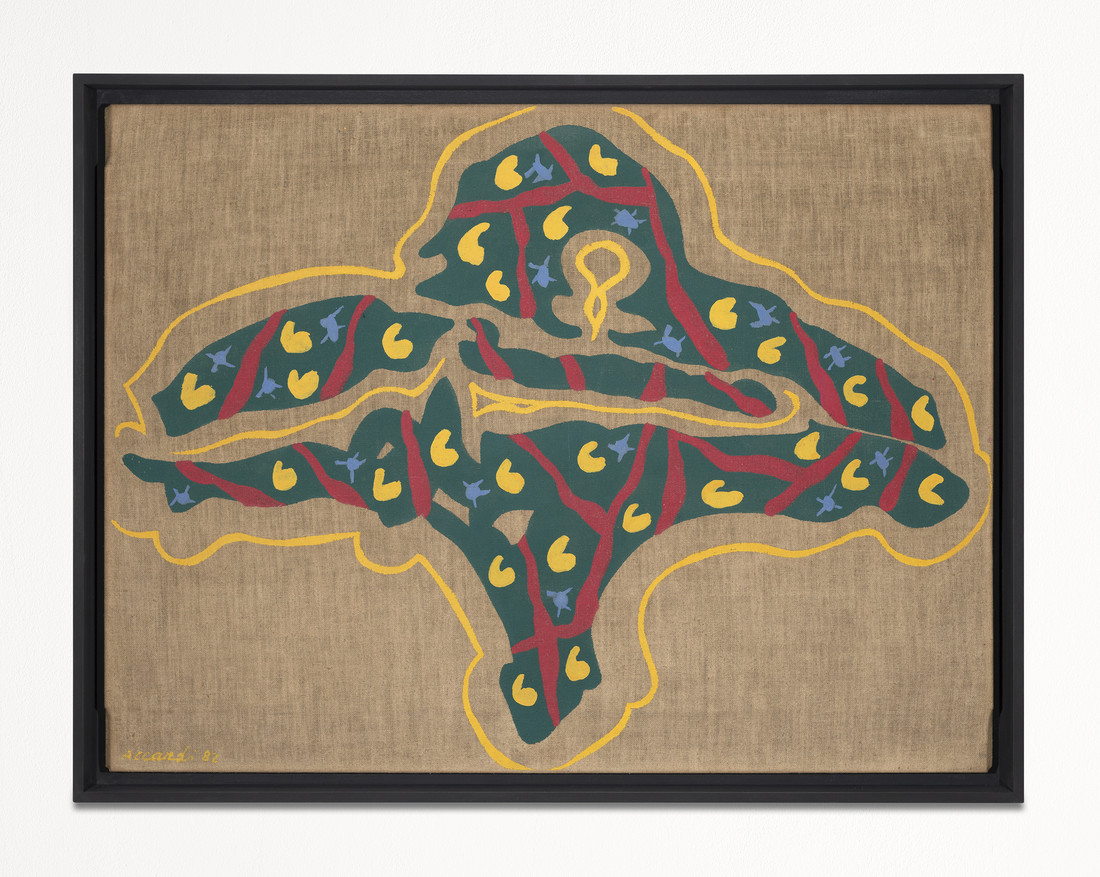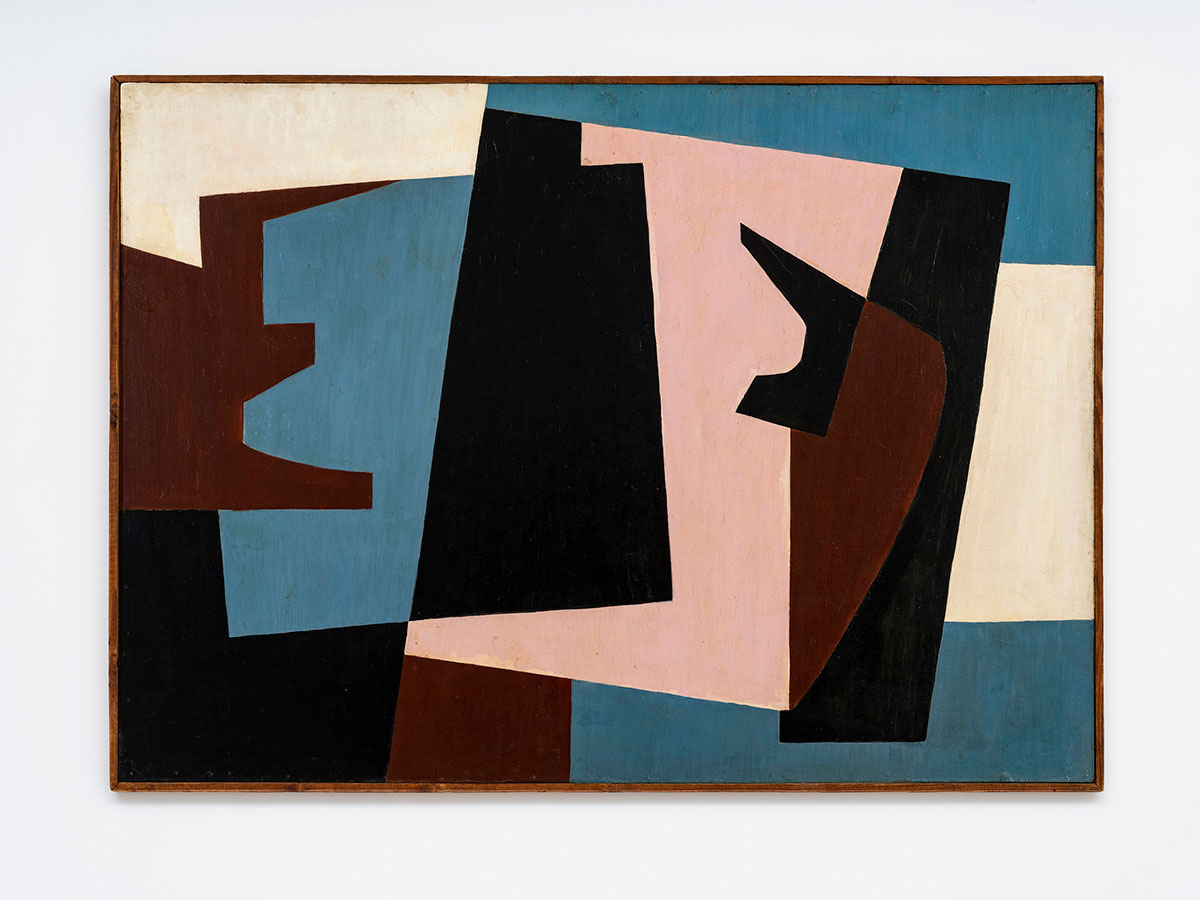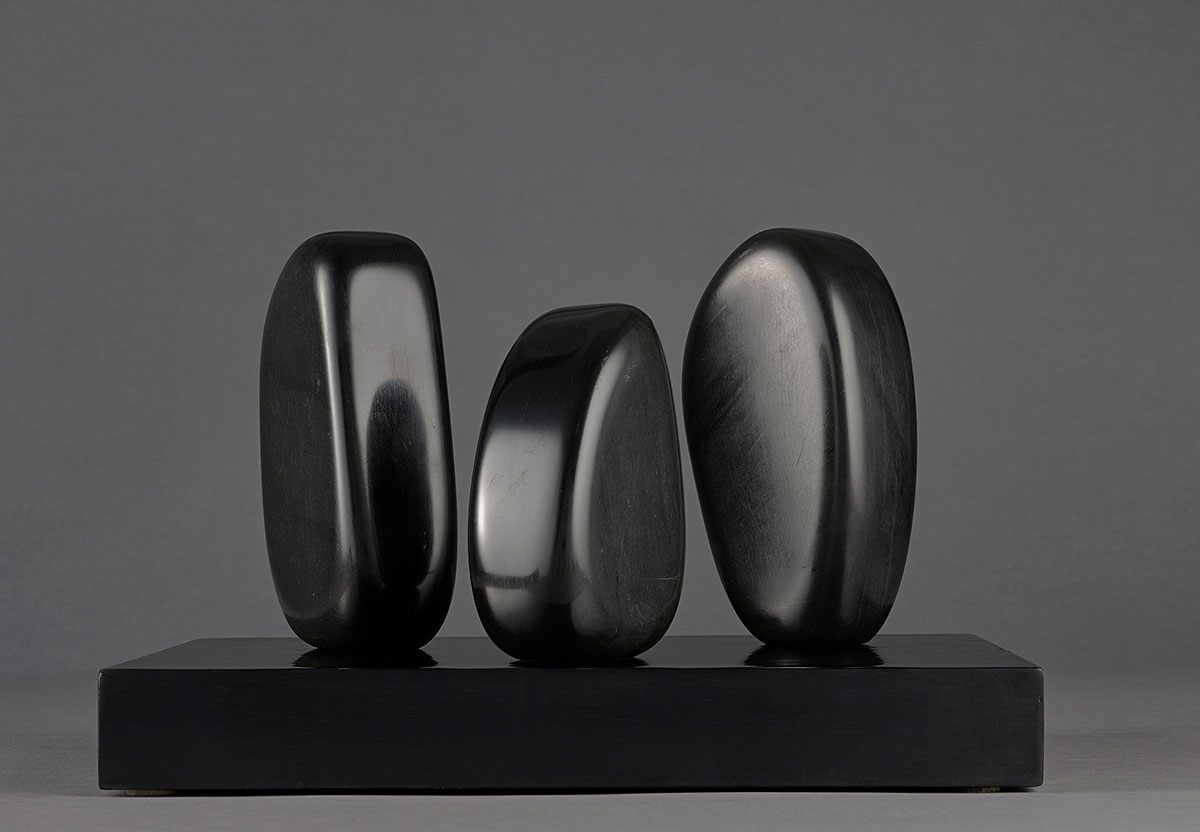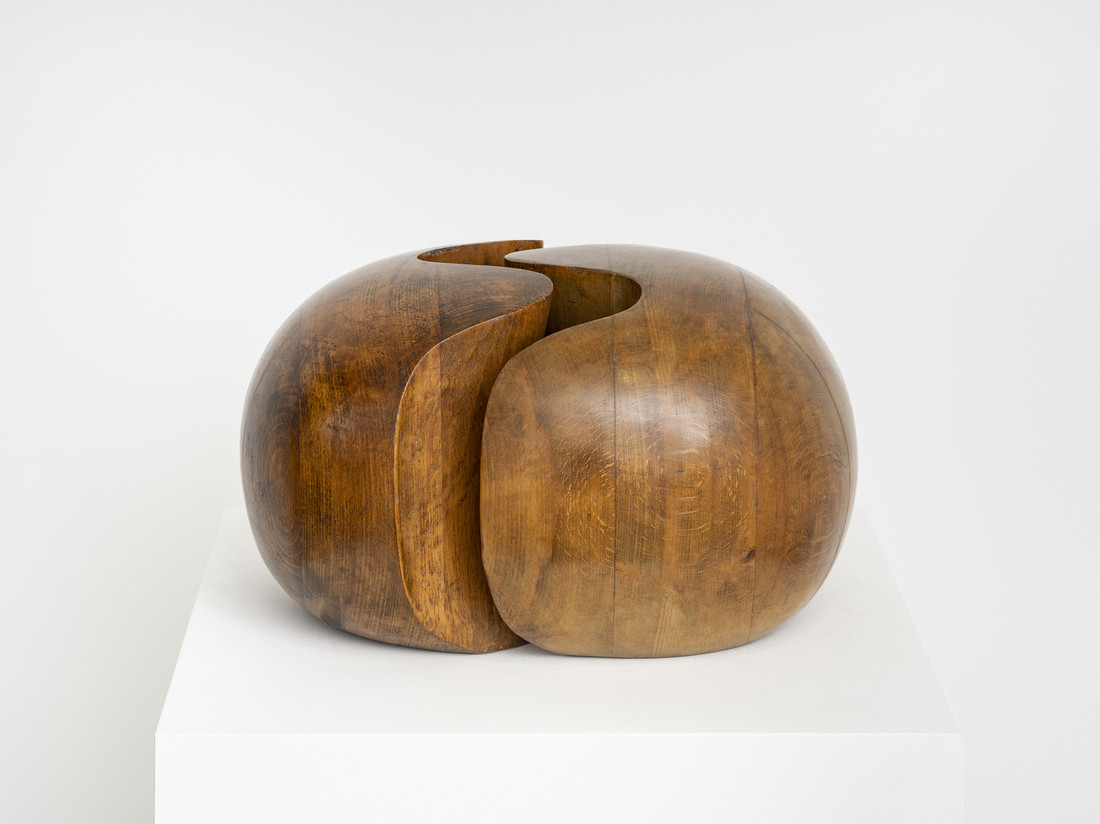PRESENTATION: Creating Abstraction
 The group exhibition “Creating Abstraction” brings together seven female artists whose experimental approach to material and engagement with Modernism has pushed the boundaries of abstraction. The exhibition centres on the idea of multi-disciplinarity as a means of exploring abstraction and creates dialogues between the sculptures, paintings, textiles, works on paper, video, photography, and installations.
The group exhibition “Creating Abstraction” brings together seven female artists whose experimental approach to material and engagement with Modernism has pushed the boundaries of abstraction. The exhibition centres on the idea of multi-disciplinarity as a means of exploring abstraction and creates dialogues between the sculptures, paintings, textiles, works on paper, video, photography, and installations.
By Dimitris Lempesis
Photo: Pace Gallery Archive
Despite vastly disparate nationalities and socio-economic backgrounds, there is a shared sensibility between the artists who participate in the exhibition and each found inspiration in Modernism’s non-hierarchical approach to material, and abstraction’s rich capacity for multi-disciplinary experimentation. One of the founders of the radical artist group Forma 1, Carla Accardi was a major figure in the avant-garde twentieth-century artistic movements in Italy. Accardi’s experiments with abstraction reached their peak most notably in her use of sicofoil, a transparent material onto which she painted graphic, abstract compositions. This unconventional surface not only reveals the structural support and wall behind, emphasising the physical and spatial quality of the painting, but it also interacts with light in unexpected ways, simultaneously reflecting and absorbing. In the mid-1960s, Accardi transposed these ideas into three dimensions, sometimes inserting lights within her structures to throw shadows onto the walls, traversing the boundaries between painting, sculpture, and installation. Engaging with the histories of 20th century architecture, design, and art, the work of Leonor Antunes reflects on the functions of everyday objects, contemplating the potential of Modernist forms to be materialised as sculptures. Antunes investigates the coded values and invisible flow of ideas embedded within objects, transforming them into reimagined abstract structures. Integrating materials such as rope, wood, leather, and brass, Antunes silently rattles the aesthetic traces of Modernism to divine an altogether revived, rethought way of looking forward by looking back. Borrowing from vernacular traditions of craftsmanship from areas like South America, Mexico, and Portugal, Antunes seeks to understand the construction principles behind rational designs, as well as the process of abstracting reality through its reduction to geometry. Yto Barrada is recognized for her multidisciplinary investigations of cultural phenomena and historical narratives. Engaging with the performativity of archival practices and public interventions, Barrada’s installations reinterpret social relationships, uncover subaltern histories, and reveal the prevalence of fiction in institutionalised narratives. Much of Barrada’s work has focused on borderlands, microhistories, and autonomous agency within a political landscape. Interested in developing a platform for cross-cultural dialogue and exchange, she founded the non-profit Cinémathèque de Tanger in 2006. Barrada works across a wide array of disciplines, including drawing, printmaking, photography, furniture, collage, and installation. In recent years her practice has expanded to include film and textiles, which she dyes by hand with pigments collected during her travels and extracted from the plants and insects in her Tangier studio garden. Widely considered the first abstract artist in Lebanon, Saloua Raouda Choucair’s practice encompasses painting, sculpture, jewellery, textiles, and works on paper. Influenced by Arabic poetry, architecture, mathematics, and Islamic design, Choucair constructed a visual language that has a distinctly modular, architectural quality. When she arrived in Paris in 1948, she was surprised to find a community of artists also working with abstraction. The dual influences of Islamic design on the one hand and the radical Modernist movements of Paris on the other are at the core of Choucair’s work. Her work bridges this divide, finding both commonality and playful juxtapositions. A pioneer of the direct carving technique, Barbara Hepworth was a central figure of British Modernism and one of the earliest proponents of abstract sculpture. Finding inspiration in the lines, forms, and rhythms of nature – particularly surrounding her seaside home in St. Ives, Cornwall – Hepworth’s iconic hand-carved sculptures often incorporated voids where she pierced the forms, sometimes interlacing string into the composition. Her practice experimented with negative and positive space in radically new ways, playing with the interior-exterior dynamic of abstraction. Though most widely known for her sculptures in wood, bronze, plaster, and stone, Hepworth also worked extensively with drawings, paintings, lithographs, and collage. Throughout her four-decade career, Singaporean- British artist Kim Lim devoted her practice to abstract sculpture and printmaking. Inspired by the archaic sculpture she saw in her extensive travels through the Middle East as well as East and Southeast Asia, Lim’s work draws on ancient forms while retaining a distinctly Modern aesthetic. Lim’s visual lexicon was also highly informed by the organic, simple shapes of nature, which she translated into her sculptures and prints with a minimal elegance. Though she worked with bronze, steel, and fibreglass, Lim’s sculptures were primarily rendered in stone and wood, which she carved by hand in her London studio. Louise Nevelson, a leading sculptor of the 20th century, pioneered site-specific and installation art. Commonly recognized for her wood sculptures made of box-like structures and nested objects painted in monochromatic black, white, or gold, Nevelson also experimented with bronze, terracotta, and Plexiglas while producing numerous collage works, large-scale assemblages, and reliefs. Comprised of discarded furniture and other wood elements found in the area surrounding her studio, Nevelson’s compositions explore the relational possibilities of sculpture, translating the external world into a personal landscape.
Works by: Carla Accardi, Leonor Antunes, Yto Barrada, Saloua Raouda Choucair, Barbara, Kim Lim and Louise Nevelson
Photo: Kim Lim, C- Screen print, 1995, Screen print, 50 cm × 58 cm (19-11/16″ × 22-13/16″), Courtesy Pace Gallery
Info: Curator: Carla Chammas, Pace Gallery, 5 Hanover Square, London, United Kingdom, Duration: 3/2-12//2022, Days & Hours: Tue-Sat 10:00-18:00, www.pacegallery.com




Right: Carla Accardi, Segni Grigi, 1986, varnish on sicofoil, 130 cm × 118 cm (51-3/16″ × 46-7/16″), Courtesy Pace Gallery



Right: Yto Barrada, Practice Piece (Sewing Exercise #17B), 2019, gelatin on silver print, 14″ × 11″ (35.6 cm × 27.9 cm”), Courtesy Pace Gallery

Right: Leonor Antunes, anni #26 I, 2020, Brass, 280 cm × 150 cm × 20 cm (9′ 2-1/4″ × 59-1/16″ × 7-7/8″), Courtesy Pace Gallery
